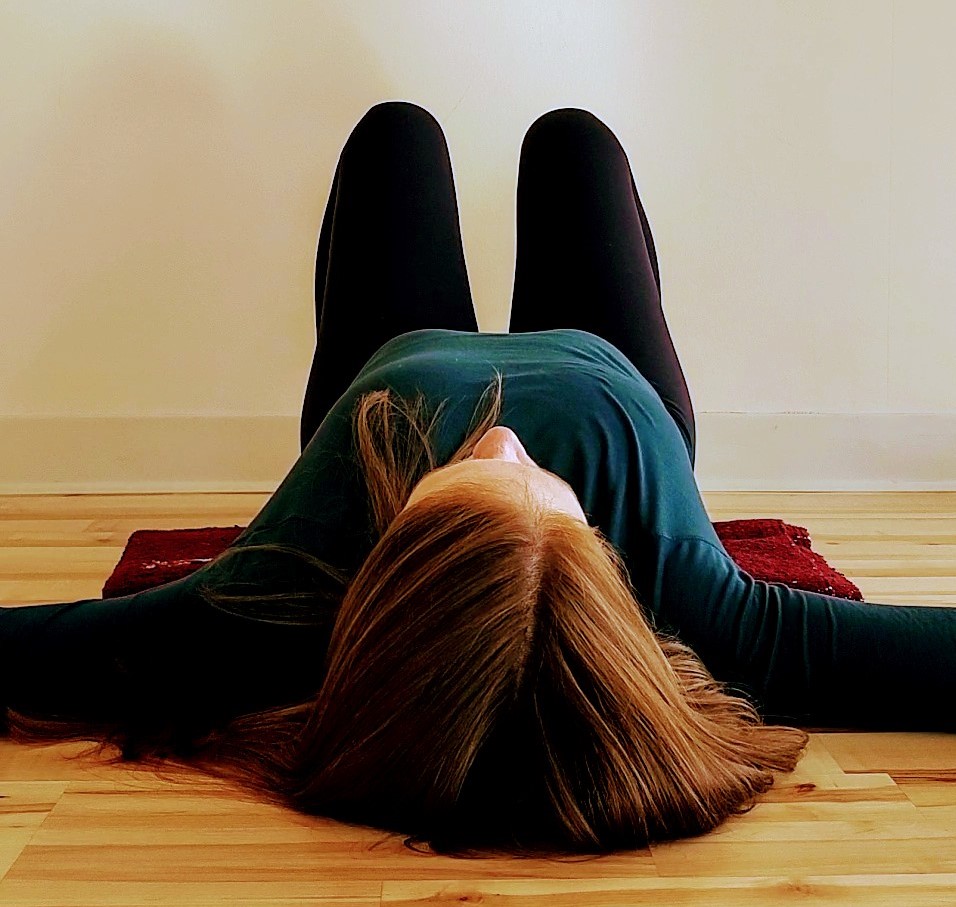
Many who come to yoga experience substantial benefits right away.
Yoga feels good! So, we keep coming back.
But after a while, classes get less exciting. Our bodies get used to the poses and when the newness wears off, we hit a plateau. At this point, many fall into a trap, believing the only way to advance their practice is to make it physically more difficult.
While it is true that a plateau is a signal that you are ready for the next step, it does not mean you have to learn headstand or complicated balancing poses to take things further. In fact, when we only focus on the physical aspects, we miss what yoga is all about.
Here are eight holistic ways to deepen your yoga practice:
1. Get personal.
Step away from the mat for a minute and take inventory. What is happening in your body right now physically, mentally, and emotionally? Allow these observations to inform your practice as you move forward.
For example, if you are experiencing depression, you likely won’t have the physical and emotional resources for an intense practice. This would be a good time to explore yoga in the context of mental health, and which yoga poses and styles might be able to work in tandem with other therapies and supports to help lift your depression.
2. Rediscover asana.
Each yoga asana (pose) involves both form and function. When we begin to practice, we are overwhelmingly focused on form: where the feet go, how high to lift the arms, when to bend the knees, etc. But the suggested placements of various parts of the body is just the starting point. In any given asana, the muscles are engaging in an energetic dance—contracting here, releasing there, drawing forward here, opening up there. When you learn the function of each pose, and what that function requires of various muscle groups in the body, the poses come alive in a new way.
To learn what’s happening energetically in the poses, it’s vital to seek out a qualified teacher or instructional video or find a credible online resource, such as Yoga Journal or Yoga International for descriptions.
3. Get fearless with modifications.
It is critical to move past the idea that props are there to make things easier or less advanced. Once you discover how your individual body responds to form and experiences function in the poses, you can learn when and how to modify.
For example, part of the function of trikonasana (triangle pose) is to be able to enjoy a satisfying twist. This happens readily when we keep both sides of the torso spacious and long. However, many practitioners prioritize reaching the lower hand to the floor over keeping space in the side body. When you understand the necessity of an open side body in this pose, you welcome the use of a block. With the block under the bottom hand, the thoracic spine opens up and we’re able to access a gratifying twist.
Person A crunches the side body but is able to touch the floor with their hand. Person B uses a block and gains a spacious, open twist. Who receives the benefits of trikonasana? Person B! And it required the modification of a block.
4. Practice without a teacher.
Or more accurately, get to know and trust your body as your teacher. Spend a few minutes at the beginning of your practice and get on your mat alone. Sit or lie down and just see where your body wants to go. Spend as much or as little time in the poses as you like and allow yourself the space to invent new shapes and variations according to your body’s intuition.
The first time I did this, I ended up forgoing the yoga video I had planned to practice with altogether because it was so wonderful to feel my way through my own practice.
5. Buckle down on pranayam.
Pranayam (breath control) has just as wide a lane on the eight-limbed path as asana. Start to add pranayam after your asana practice. You can seek out guided pranayam videos or select teachers who are intentional about including pranayam in their asana classes.
When we begin to add this piece, it is normal to get fidgety and restless. Breathwork sometimes does not feel as exciting as asana, but when we skip it, we are missing out on a critical and beneficial piece of the practice.
6. Dig deep to demystify.
Are there parts of the yoga discipline that confuse you? Maybe a teacher has referred to chakras or used chanting during class, or maybe you have had positive experiences with mudras or mantras, but don’t fully understand where these practices come from or how they are meant to work. Look at this as an opportunity and a responsibility as a yoga student to begin to educate yourself (see #7).
Another area for exploration is the various styles of yoga we see in the west. If there is a specific style that really suits you (Iyengar, Yin, or Ashtanga, for example), begin to look into its lineage and history. You will come away with a more holistic understanding of your practice and how it made its way to you.
7. Decolonize your practice.
Yoga is for everyone. It is also wisdom with deep and broad roots that we need to acknowledge and respect. There is a fine line between showing appreciation for the people, cultures, texts, and traditions that gave birth to yoga and slipping into cultural appropriation.
As a rule of thumb, if you are not sure what something means or where it comes from, it is time to ask or do your own research. Follow highly qualified yoga educators like Susanna Barkataki, Arundhati Baitmangalkar, and Shyam Ranganathan on social media. Acknowledge when you have a misunderstanding or discover that you have unintentionally appropriated. Drop your ego, gather your humility, and move forward a more authentic practitioner having learned from your mistakes.
8. Find your balance.
It is typical for people to come to yoga through asana. But the poses are just a sliver of the yoga tradition. Yoga invites us into a life of ease over suffering, connectivity over individualism, and balance in the body, mind, and spirit. Until we complement our asana practice with the other pieces of the yoga path, we only catch a glimpse of what yoga has to offer.
We can counter the asana-centric yoga culture in the west by studying and practicing the other seven limbs of the eight-limbed path, and by spending time reading yogic texts like the Yoga Sutra, The Bhagavad Gita, and the Upanishads. Yoga philosophy courses are also easy to come by, and many are easily accessible online.
To sum things up, progress in yoga is not vertical. There is no yoga ladder. In fact, a person’s progression along the path is more amoebic than linear. We reach out for something here, slowly shift over there, consume something here, discover something new there, and so on.
Just like you did at your first class, keep showing up, staying open, and being curious. There is easily a lifetime of discoveries for you to make in your practice!
~








Read 13 comments and reply